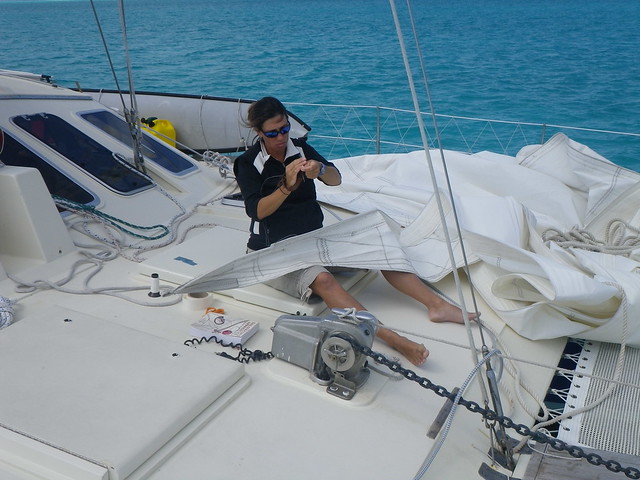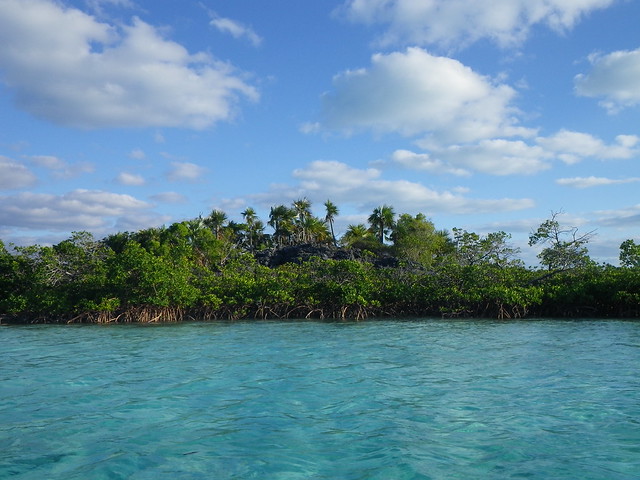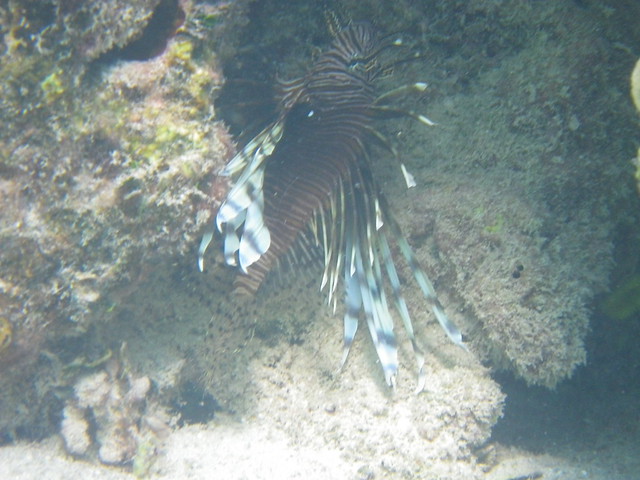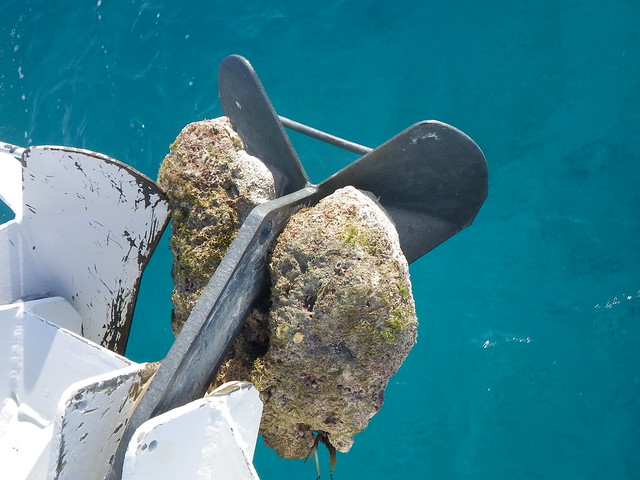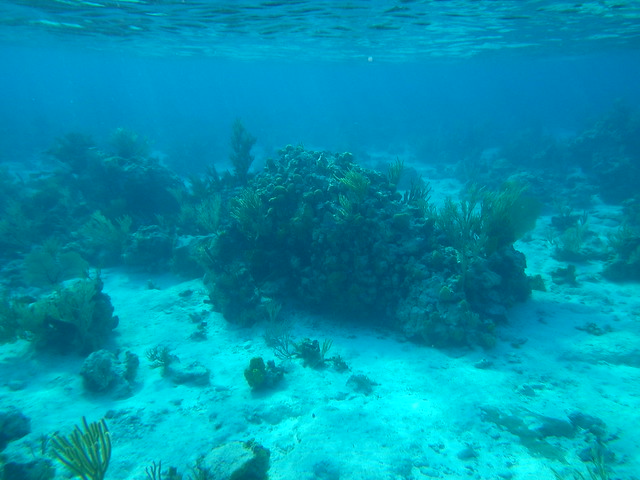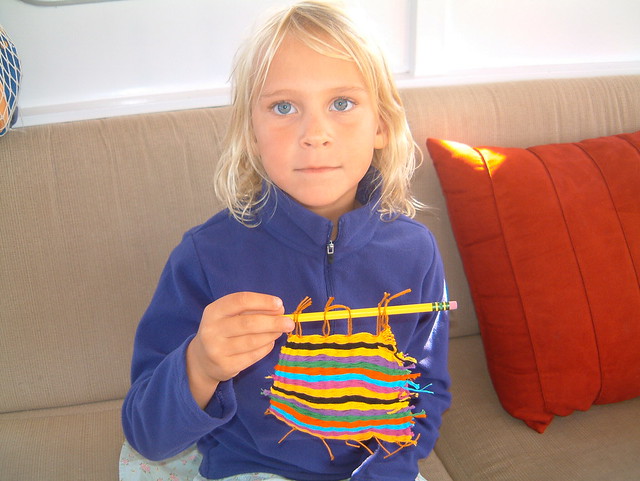This has been the most boring passage we have ever made, and I mean that in the most positive way possible. (Our kids are not actually allowed to use that word—they actually think that boring is the “b—“ word.) But the opposite, “exciting,” we had on the first day out of Georgetown and none of us wants that kind of excitement again any time soon. At the moment, we are motoring at about 4.5 knots across a glassy Gulf of Mexico about 20 miles from the entrance to Tampa Bay. It’s so smooth I can’t tell the difference between the reflected starlight and the phosphorescent sparkles in the water.
Just out of Key West yesterday morning, a motor yacht passed us at a shocking speed and left us rocking in its wake. Jay and I laughed about his gas bill, as we sailed gently (for free) with spinnaker flying. Jay said they’d probably be in Sarasota in time for lunch. Here we are, still at it, a day and a half later, and I’m thinking there’s something to be said for just getting there. Of course, that guy didn’t get to see the spectacular vermilion moon rise last night, or hear the dolphins puffing and blowing around the boat at four this morning, and he definitely did not have time to play Scrabble, Dominoes, Number Factory, the Allowance Game and Candyland with four charming children. Not to mention baking cookies and doing art projects. We’re definitely taking the slow, scenic route, and there are advantages to that as well.
Typically, travel days represent a break from regular routines—the kids know they can expect around-the-clock snacks and a break from schoolwork and most chores. But the last 36 hours have been so calm and, well, boring, we really could have done all the regular things. I’ve never arrived after being at sea with the dishes done and the cabin tidied and even swept. It’s kind of nice to be coming into port without the usual chaos.
So, what is passage-making like? We get this question all the time. If it’s turbulent, then I try to prepare ahead—plenty of ready food like nuts and fruit and cheese and crackers Usually at least one of us feels the effects of mal de mer and spends most of the time lying around. I, thankfully, rarely succumb even to queasiness, so that explains why I take more night watches. For some reason, the disorientation of darkness irritates Jay’s symptoms, but I find it to be pleasant, even when the boat is moving a lot. But really, unless something exciting is happening (like reefing the mainsail in the rain in 20 knots of wind), passage-making is really boring.
For grown-ups this is not really a problem. Jay and I, swapping shifts at night, are tired during the day, so we alternate between reading, napping, and snacking. The older boys usually keep themselves busy with Lego creations and reading, but occasionally get in trouble for boyish mischief. It is hard to be cooped up in a boat with your family for days on end, so I can understand it, but it doesn’t really make it less annoying. They like to play “boat soccer” a game that uses the companionways down into the hulls as goals and has several convoluted rules and intricate scoring, but that usually ends in arguing, and we have to confiscate the ball. Sarah occupies herself well, and sometimes Sam, too, but they seem to need more attention and guidance to stay busy. So I read aloud, and we play lots of games and put on movies and pop popcorn.
What I have come to realize is that although I dread the long passages—the fatigue inherent with only getting cat-naps and the challenge of keeping everyone comfortable and busy—I also look forward to them, and really appreciate the sense of our own self-sufficiency and the accomplishment of covering all those miles. Sure, you could hop on an airplane and be in Georgetown, Bahamas tomorrow, and it took us ten days to cover the same distance. But where’s the fun in that?

